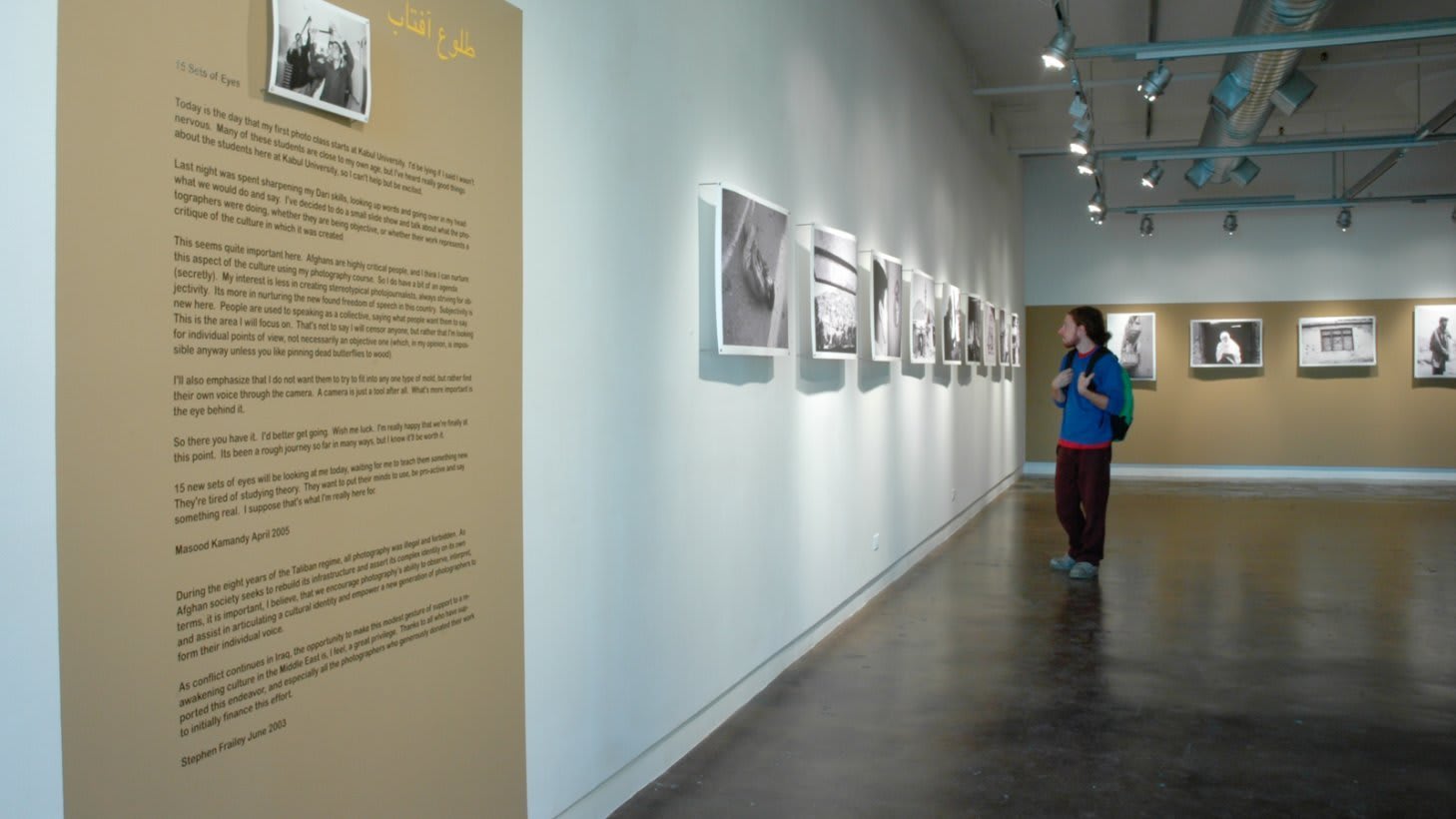Exhibition
First Light

SVA Chelsea Gallery
601 West 26th Street, 15th floor, New York, NY 10001Reception
Tue, Oct 25; 6:00 - 8:00pm
School of Visual Arts presents “First Light: Teaching Photography in Kabul,” an exhibition of the first Afghan students to learn basic photography and darkroom techniques since the fall of the Taliban. The exhibition is a unique opportunity to see Afghan society through Afghan eyes, as the country seeks to rebuild its infrastructure and assert its identity. The exhibition brings together the photographs of over 25 Afghan men and women from Kabul University, taught by Afghan-American and SVA alumnus Masood Kamandy, who is also curator of this exhibition. “First Light: Teaching Photography in Kabul” will be on view from October 21 through November 12, 2005 at the Visual Arts Gallery, 601 West 26th Street, 15th Floor, New York City.
During the Taliban rule in Afghanistan (from 1996 to 2001), the simple act of taking a photograph was forbidden. The Taliban believed photographs of human beings were “graven” and against the tenets of the Islamic faith. Some foreign photojournalists were allowed to capture what was happening, but the Afghan people themselves had no way to photograph the world around them. After the fall of the Taliban these restrictions no longer applied, but little was in place for the serious pursuit of photography and Kabul University was, for the most part, left in tatters.
In 2002, Kamandy, then a photography student at SVA, visited Afghanistan to discover his homeland for the first time and investigate the state of photographic education at Kabul University. With the help of Stephen Frailey, chair of SVA’s BFA Photography Department, Kamandy decided to embark on an ambitious plan to build all new darkroom facilities and develop a comprehensive curriculum based on the SVA model. He explains the impetus for this project: “Photography has given me a way to interpret my world and the opportunity to experience my heritage in a way that no other profession could have. We now have the chance to educate Afghan artists to photograph the world they live in with a critical eye. This is key to social progress and a way to heal after so many years of war.”
Over the next three years, Kamandy and Frailey worked together to make this a reality. They were able to raise substantial funds through an auction at Christie’s in 2003, with more than 50 photographers such as Tina Barney, Larry Clark, Annie Leibovitz, David Levinthal and Stephen Shore donating their works. With this money, Kamandy and Frailey went on to purchase the necessary equipment and supplies, transport the equipment to Afghanistan and finally build all new darkroom facilities and create adequate classroom space at the University. In March of 2005, Kamandy traveled to Kabul once again, this time to oversee the construction of the facilities and teach the first classes to over 70 Afghan men and women at Kabul University. Kamandy also trained professors to take over for him, showing them how to use the cameras and how to operate and maintain the darkroom. Kamandy recently finished up the semester, and returned to New York with the students’ work in hand.
Despite this remarkable achievement, much remains to be done. The goal is to work with Kabul University to create a fully-functional degree-granting Photography Department (the classes that are now being taught are under the purview of the Graphic Design Department.) A secondary goal is to establish a teaching fellowship program that will allow teachers from the United States to travel to Kabul and interact with students in the new department. This will also allow for continual training of faculty in new areas of photography and active intellectual exchange between the SVA and Kabul University.


